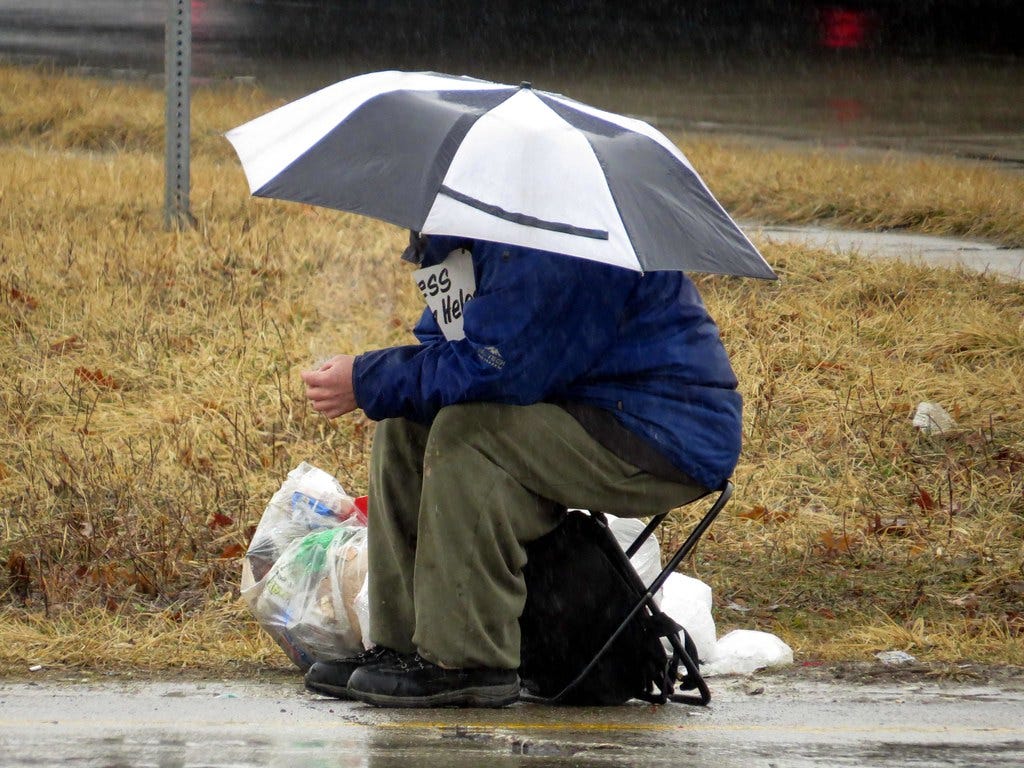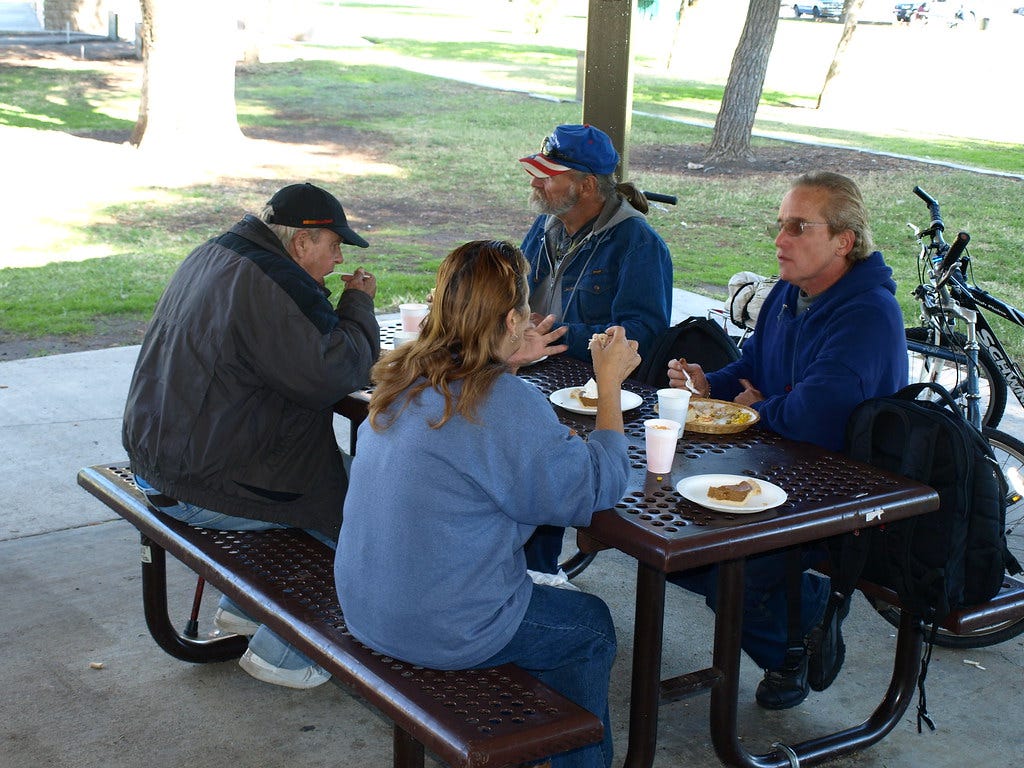My Homeless Community: It's Time for a new Approach to Addressing Homelessness
I acknowledge that the issue of unsheltered homelessness is complex and that it will be difficult to solve. I hope that my own experiences can portray this issue in a more humane light.
Editor’s Note: Do your part to Sustain the Way!
18 Oregonians have gotten us to $980 - keep the momentum going so we can hire a part time editor.
Will you send $20?
Donate here or subscribe below to create a part-time editor position. Thank you! - kevin
Jessica Gomez is Founder/CEO of Rogue Valley Microdevices and serves on the OIT Board of Trustees, and the Oregon Healthcare & Oregon Business Development committees.

When people think of communities, they envision homes, neighborhoods, and towns filled with people who share common interests and social ties. They do not immediately associate homelessness with community, and often homeless encampments are viewed as disruptive to the community. People will call the authorities to dismantle the camps and disperse the individuals living there. But to the homeless, those encampments are their community.
As a homeless teen in the early 1990’s, I lived among other homeless kids in Ashland, Oregon. Many of them were transient, traveling between California and Washington. Several had escaped abusive family situations and were looking for a more stable living arrangement. Some had family members they could turn to, others did not. Many would “self-medicate” to help take away the pain and trauma of what they had been through. Unfortunately, for many of them, this behavior became too difficult to stop.
My own experience included tough breaks and strong bonds. Being under sixteen years old, I could not get a job on the books. The younger kids relied on the older kids to help obtain food and other resources. Panhandling was how many of us got money, and we shared what we could. We all knew each other’s life stories. We knew who to trust and who not to trust. Some of the adults had good intentions, others did not. I was lucky that I always had other kids looking out for me.
Looking back, I would call the homeless kids living in Ashland a community. It was a group that did not pass judgement on each other because we knew that we were all working together toward a singular goal – to survive. I was fortunate to have family on the East Coast where I found a home again, and with their help was able to rebuild my life. It was a difficult adjustment for me to be treated like a kid after having lived so long on my own.

Which brings me to homeless camps. A more accurate description would be a homeless community. There are many homeless communities across Oregon, with similar dynamics to those I described. Many homeless individuals do not trust outsiders or authorities for good reason. Many do not want to leave their trusted friends, their companions, and their pets, who offer comfort and protection. If we are going to help our homeless population, our solutions need to consider the community they belong to.
Our solutions need to also consider the differences in these communities and among their members. Not all people struggling with chronic homelessness have the same challenges. Some are suffering from co-occurring disorders—where substance abuse combined with a mental health condition drives them to carry out property crimes or exhibit unpredictable behavior. Others may be stable enough to hold a job but need support to rebuild family relationships and work through childhood trauma before they are ready think about skill building and self-sufficiency. And then there are those who just need a stable place to live, while they get their driver’s license, social security card, and put together a resume.
Communities across the nation are struggling to find a solution that truly addresses homelessness. We need a new model. In fact, if we think just slightly out of the box, it is not hard to see that we already have a model that could be easily adapted for this purpose.
The assisted living model for care of the elderly has similar components and could be adapted to address systemic homelessness. This work would take place in community living complexes that are divided by level of care. For example, those who are in the criminal justice system due to mental health or addiction issues will receive medical treatment until they have been stabilized and begin responding positively to rehabilitation. Residents who are stable but require ongoing assistance from behavioral health and medical professionals will be housed and treated in a community-like setting. Residents who still need occasional support but can hold a job will work toward becoming self-sufficient so they can ultimately transition to an independent living model. Residents of these facilities will be allowed to remain there indefinitely if that is what they choose. Once the multi-tiered support system is in place, we will no longer permit people to live unsheltered in our communities.
I acknowledge that the issue of unsheltered homelessness is complex and that it will be difficult to solve. I hope that my own experiences can portray this issue in a more humane light and provide some guidance toward a solution that is both compassionate and effective.
************************************
Connect with Jessica:
@RVMicrodevices
Keep the conversation going:
Facebook (facebook.com/oregonway)
Twitter (@the_oregon_way)




Thanks for this insight, Jessica. It makes me realize that trying to talk homeless campers off the streets one by one may not be as successful as getting groups of the homeless who rely on each other to transition to settings where they can live together, temporarily or even longer term, in community.
Thanks a lot for your article. Although I have created a project to help homeless people (www.howtohelpthehomeless.net), I never realized that people experiencing homelessness in the same camp, are also part of a community. This makes dismantling those camps even more of an issue.